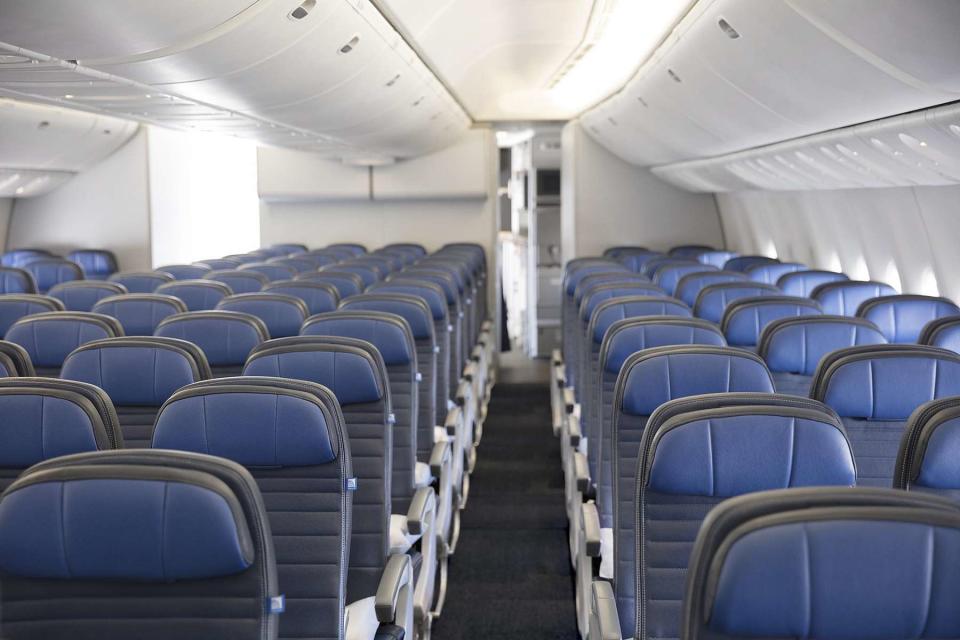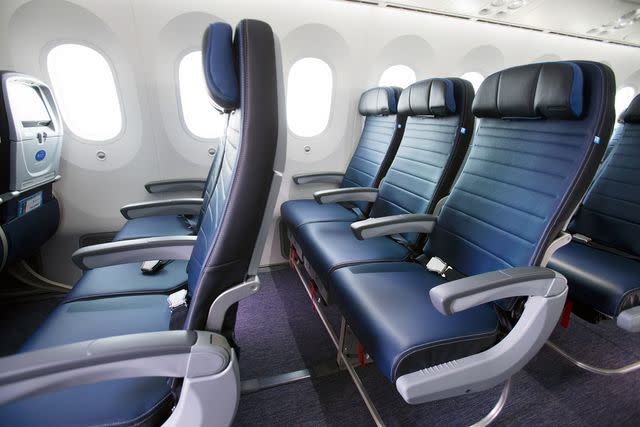Some United Airlines Planes Don't Have Row 33 — Here's Why
Superstition or a myth, United Airlines responds.

Airline seat maps require a complex configuration for ease of booking and transfer in case of a change in aircraft. And while the business and first-class rows often skew the order of economy class seats, I was surprised to see row 33 missing entirely on my last United Airlines flight.
Hotels are known to skip floor 13 to avoid issues for guests who have triskaidekaphobia, a fear of the number 13. A fear of the number 33, however, is yet to be coined, thus prompting the question: Why would an airline skip row number 33?
Founded in 1926, United Airlines flies to more than 300 destinations in 60 countries spanning North America, South America, Europe, Asia, and Oceania. About one-third of its routes are completed within the continental United States, the mainline service for which was (and continues to be in some parts) the Boeing 737-700. The carrier is standardized to 32 rows. However, after the first-class rows of 1 through 3, the economy plus seats start at row 7 (skipping 4, 5, and 6) to offer more space to the upgraded passengers. So, the aircraft doesn't actually have 32 rows; instead, it has 29.

While some of the Boeing 737-700 aircrafts are still in service, many of the newer planes are missing row 33 in order for the seat map to end in row 40. The row is missing on the following Boeing aircrafts: 757-200 (both versions) 737-700 (both versions), 737-800 (all three versions), 737-900 (all three versions), A319, and A320. As a result, these planes have four first-class rows. The configuration then skips rows 5 and 6, and starts at 7 through 12 for economy plus. Then, another shift happens: Rows 13 through 19 are skipped, and they pick up again at row 20 and 21 (exit rows). Economy class starts at row 22, and again, row 33 is skipped. This aircraft has 29 to 30 rows. Thus, while these planes are different, they don't offer much more seating than the Boeing 737-700, but do provide more comfort.
"We used to skip 33 on certain maps to make the [final] row standardized, but the end row is no longer standardized," a United Airlines spokesperson told Travel + Leisure. In short, the reasoning behind having a unanimous seating map is a math equation of sorts. The aircraft seating chart must end in an even, round number, like 40 or 50, which the airline considers "standard." The row is not skipped on the even newer aircrafts. Rows 20 and 21 are maintained at exit rows across the board of all United Airlines planes, resulting in a skewed number system, depending on the aircraft and potentially "missing" rows. This makes it easier to switch out airplanes and for passengers to choose their seats, always knowing where the exit rows are located.
A full list of the United Airlines fleet and seat maps are available on their website. These maps reflect the seat type, location of the lavatories and exit doors and rows, position of the galleys, and in-seat power (offered on most, but not all aircrafts.) Customers can view this map, depending on the type of aircraft assigned to operate their flight, at the time of booking.
While it's standard for airlines to skip some rows between first-class and economy plus, as well as for exit row seats, this is most common on Boeing aircrafts. However, most airlines, including Delta and American, do not skip rows in the middle, like 33. United Airlines is also switching out many of these aircrafts. So, if you happen to be on one of these flights, enjoy it now because these, too, will soon be obsolete, with row 33 permanently present.
For more Travel & Leisure news, make sure to sign up for our newsletter!
Read the original article on Travel & Leisure.

